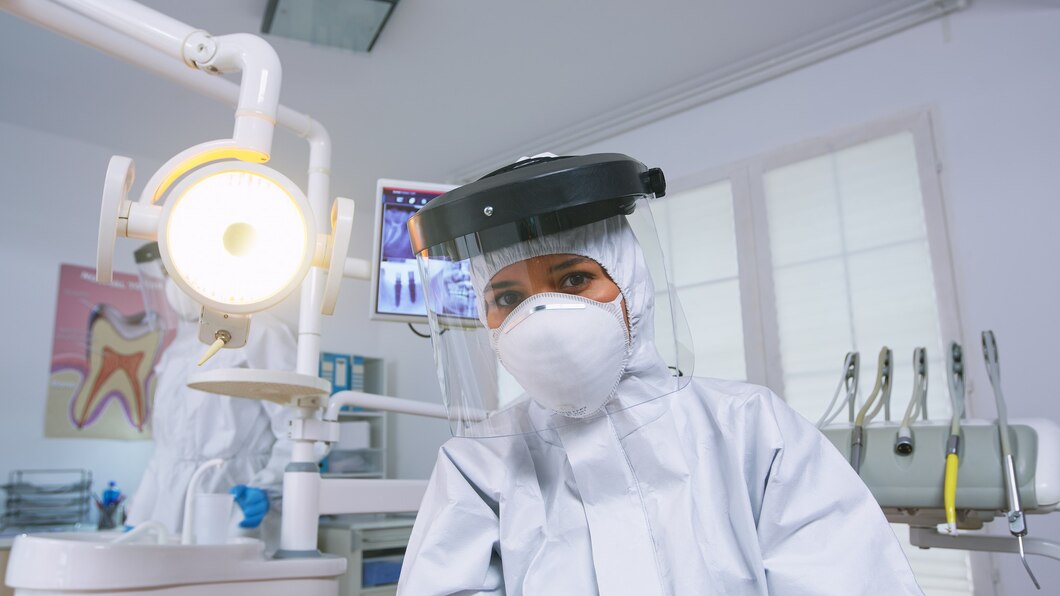Surgical lights are one of the most critical tools in the operating room. They provide the illumination necessary for surgeons and medical staff to perform complex procedures with precision and accuracy. Without the right lighting, even the most skilled surgeon may face difficulties in executing a successful operation. As surgical lights play a pivotal role in both patient safety and surgical outcomes, choosing the right one is essential. But with so many options available, what key features should you look for when selecting surgical lights?
In this blog, we will explore the essential features to consider when choosing surgical lights to ensure optimal performance in the operating room.
1. Brightness and Light Intensity
The primary function of surgical lights is to provide sufficient brightness for the surgeon to see the operating field clearly. The intensity of light required can vary depending on the type of procedure being performed. Therefore, one of the most crucial features to consider is the light’s brightness, measured in lux.
The ideal surgical light should be able to deliver high-intensity illumination while maintaining clarity and sharpness without causing glare or discomfort to the surgical team. Modern surgical lights come with adjustable brightness settings, allowing the team to modify the intensity according to the procedure’s needs. This flexibility ensures that the light can be customized to provide optimal visibility during both minor and complex surgeries.
2. Color Temperature and Color Rendering Index (CRI)
In addition to brightness, the color temperature of surgical lights is another important consideration. Color temperature is measured in Kelvins (K) and refers to the hue of the light, ranging from warm (yellowish) to cool (bluish). Surgical lights typically have a color temperature between 3,500K and 6,700K, which is closer to natural daylight.
A higher color temperature provides a cooler, bluish light that enhances visibility, particularly for procedures that require high contrast, such as examining deep cavities or distinguishing between different tissues. On the other hand, a lower color temperature can create a warmer light that is easier on the eyes for longer surgeries. Ideally, surgical lights should offer adjustable color temperatures, so the surgical team can select the most suitable hue for the procedure.
The Color Rendering Index (CRI) is another key factor. It measures how accurately the light shows the true colors of objects. For surgery, a CRI close to 100 (the scale’s maximum) ensures that tissues, organs, and blood vessels appear in their natural colors, improving the surgeon’s ability to identify critical structures. High-CRI surgical lights enhance accuracy and safety, allowing surgeons to work with confidence.
3. Shadow Control and Beam Focus
Shadows are one of the most significant obstacles during surgery, as they can obstruct the surgeon’s view. Surgical lights are designed with advanced shadow control technology to minimize this issue. Multi-directional lighting ensures that shadows are minimized, even when instruments, hands, or other objects are in the way. By reducing shadows, surgical lights provide uninterrupted illumination, helping surgeons maintain a clear view of the operating field at all times.
Beam focus is also an important feature. Surgical lights should offer adjustable beam focus, allowing the team to concentrate the light on a specific area or widen the beam for broader illumination. This versatility ensures that the light can be precisely directed where it is needed most, enhancing the surgeon’s ability to perform delicate tasks with accuracy.
4. Heat Management
Traditional surgical lights, such as incandescent or halogen bulbs, tend to produce excessive heat, which can cause discomfort for both the patient and the surgical team. In addition, high temperatures can lead to tissue drying, potentially affecting the outcome of the procedure. Modern surgical lights, particularly LED systems, are designed with advanced heat management to reduce heat emission significantly.
LED surgical lights emit very little heat compared to older technologies, creating a more comfortable environment for both the patient and the surgical team. This also reduces the need for additional cooling systems in the operating room, contributing to a more energy-efficient environment. By minimizing heat, LED surgical lights help prevent tissue dehydration, supporting better surgical outcomes and patient safety.
5. Durability and Longevity
Surgical lights are a long-term investment, so it’s essential to choose lights that are durable and reliable. LED surgical lights have become increasingly popular due to their long lifespan and energy efficiency. Unlike traditional lights that may need frequent replacements, LED lights can last for tens of thousands of hours, reducing maintenance costs and ensuring that the surgical team has consistent, high-quality lighting over time.
Durability also includes the quality of materials used in the construction of the lights. Surgical lights should be built to withstand the rigorous demands of the operating room environment. Look for lights made from high-quality materials that can resist wear and tear, ensuring longevity and sustained performance.
6. Ease of Use and Adjustability
The operating room is a dynamic environment where flexibility is key. Surgical lights should be easy to adjust and manipulate, allowing the surgical team to reposition the lights without disrupting the procedure. Lights with sterile handles or remote control options offer added convenience, enabling the team to make quick adjustments while maintaining a sterile environment.
The ability to adjust the position, intensity, and focus of the lights allows for greater precision and adaptability during surgeries. This ensures that the lights can be tailored to meet the specific needs of any procedure, enhancing both performance and patient safety.
Conclusion
Choosing the right surgical lights is crucial for ensuring precision, safety, and efficiency in the operating room. By considering key features such as brightness, color temperature, shadow control, heat management, durability, and adjustability, healthcare facilities can select lighting systems that meet the highest standards of performance. The right surgical lights not only enhance the surgeon’s ability to perform delicate procedures but also contribute to improved patient outcomes and safety.
